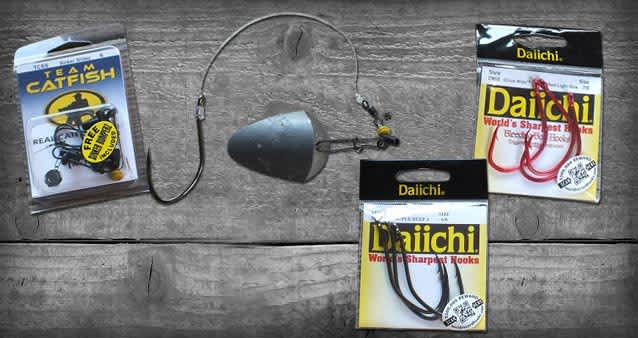On Fishing Fads: J-Hooks vs. Circle Hooks
Lewis Creek Shooting School 10.29.12

As long as people are involved in outdoor pursuits, there will be fads. Outdoor folk tend to be unaffected by clothing fashion and we tend to choose our vehicles on utility, but we can still be slave to fads. Some of those fads actually make sense, some are wishful thinking and some fall somewhere in between.
A fad that I fell for (though for a shorter time than many) was the circle hook for surf fishing, specifically for big drum fishing off the Carolina coast. Red drum, often called redfish in much of their range, grow to almost 100 pounds. The last two world record fish, both in the mid 90-pound range, were caught in early November north of Cape Hatteras on the Cape Hatteras National Seashore.
There are two techniques for catching these surf monsters. On open beach where anglers have some room to fish, the angler finds a structural area, he believes will draw fish. He then sets our sand spikes and baits up a couple or more rods and waits. The rods are watched by the angler but not held in his hands since there are more than one rod. Bait is changed out every 15 minutes or so to keep it continually putting oils into the water since drum find food primarily by smell.
Circle hooks work great for this kind of fishing since they were designed to be unmonitored. The circle prevents the hook from staying in the stomach of a fish that’s swallowed the bait. When the fish swims away with the hook in its stomach, the circle hook, with the point turned in, comes back out with the pressure of the line and then catches in his jaw as he swims away from the point where the line is attached. This hooks the fish in the jaw, keeping him alive and preventing him from dying on the hook until the commercial angler can return to retrieve him.
The other method of drum fishing is less pastoral. The Cape Hatteras Point yields more citation red drum than any other acre of beach in the world. It is a point surrounded on 270 degrees by water with currents and structure that red drum love. It is heavily fished and it’s not unusual for 100 anglers to occupy that acre of sand during a drum or bluefish run.
Here, the angler is always holding his rod because an unattended rod would tangle with a dozen lines in a matter of minutes because the currents are constantly moving lines around. When a red drum picks up the bait, he often swims towards the angler rather than away. At Hatteras Point, anglers simply can’t afford lines to be slack since this would mean tangles and the angler would have no idea when a fish picked up the bait. When the line goes slack, the procedure is to wind in the slack and then raise the rod to feel if a fish has picked it up. Most of the time, drum crush the bait in their mouths before swallowing it. A J-hook will hook the fish as it exits the fish’s mouth when the pull is from the front of the fish, but a circle hook requires the fish to be facing away from the taut line to work. With a circle hook, if the fish faces the taut line, the hook and bait can simply come out of the fish’s mouth without catching on anything.
The upshot is that a circle hook will cause a percentage of missed fish in the form of a pick up, slack line, feeling a slight resistance as the bait and hook exits the fish’s mouth, and no fish. A J-hook, fished in the hand of an aware angler will result in a hook up under the same circumstances. Hence, though it has taken several years, the popularity of the J-hook has returned.
I tried the circle hook for short time but realized the shortcomings of the circle hook after getting a couple of good pickups and getting nothing. I changed my strategy to using Daiichi’s Non-offset Circle hook in 7/0 for beach fishing with multiple rods and the Octopus Wide Bleeding Bait hook for when I hold the rod. The non-offset circle prevents a deep hooked fish on an unattended rod and the wide J-hook assures a hook up even if the fish is facing me when the line comes taunt.
I’m excited about Daiichi’s new Extra Heavy Super Deep J-hook and I’ll be trying them out on my upcoming trip during Drum Week, the first week of November, when the last two world record red drum were caught in years past. The new hook is a wide J with a heavy shank diameter. The large diameter shank is important with heavy fish like drum in the surf because a smaller diameter hook will wear a larger hole in the fish’s jaw and increase the likelihood of losing the fish in the wash during the critical time of beaching a heavy fish in surf.
Who knows, the new world record fish may be just off the beach, just waiting to be landed on the new Daiichi Super Deep J-hook?

